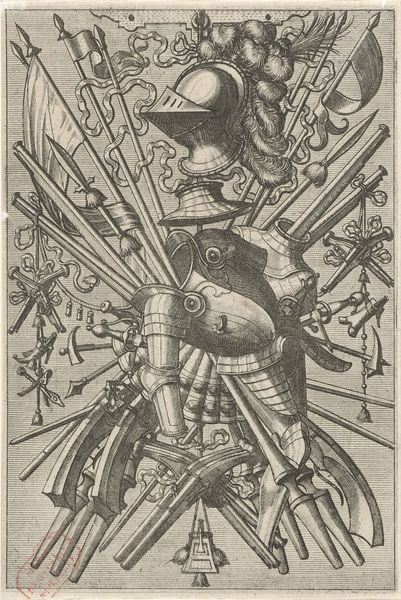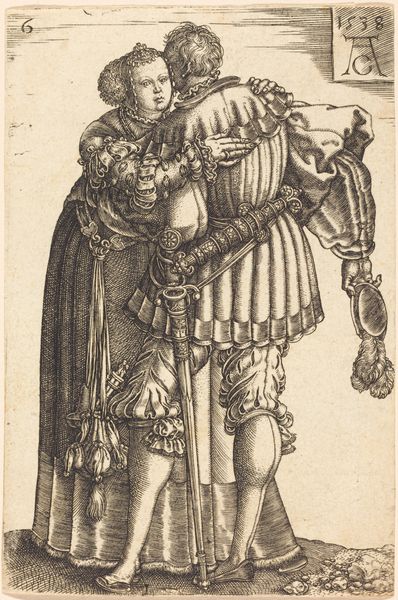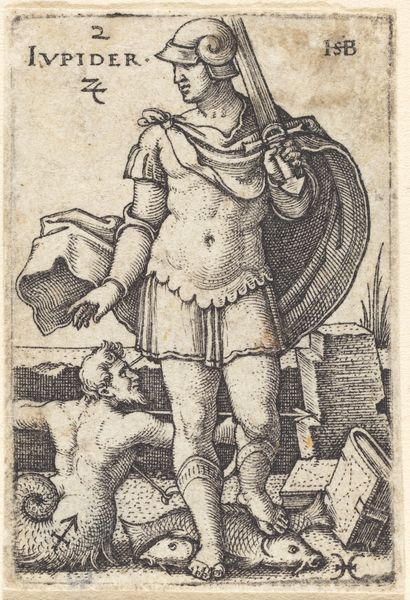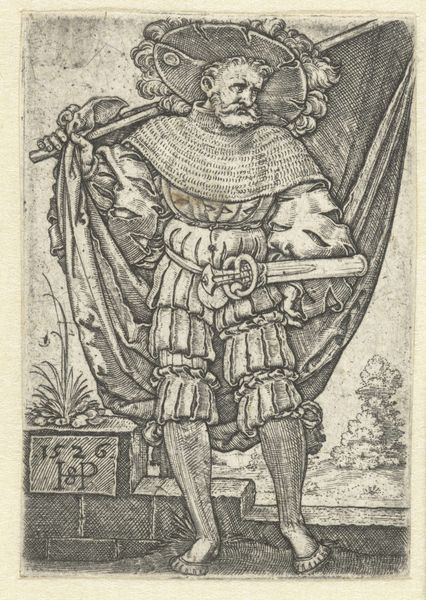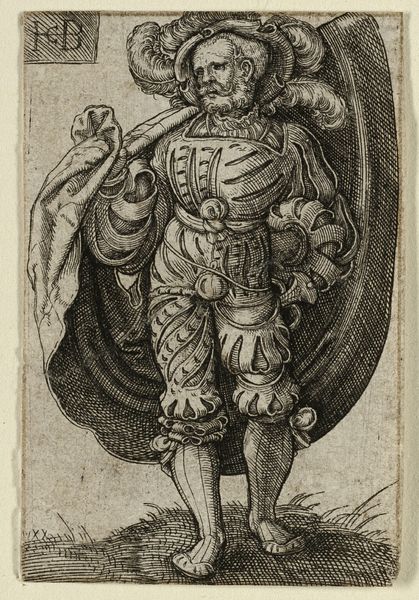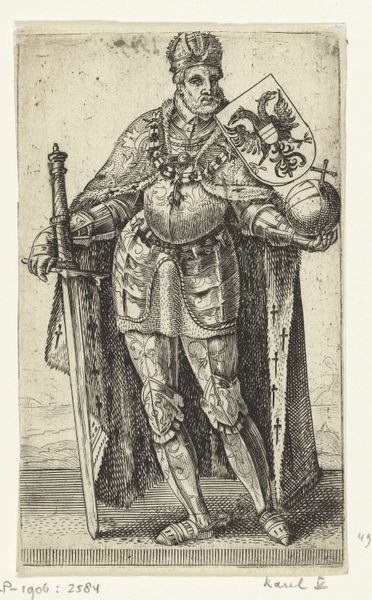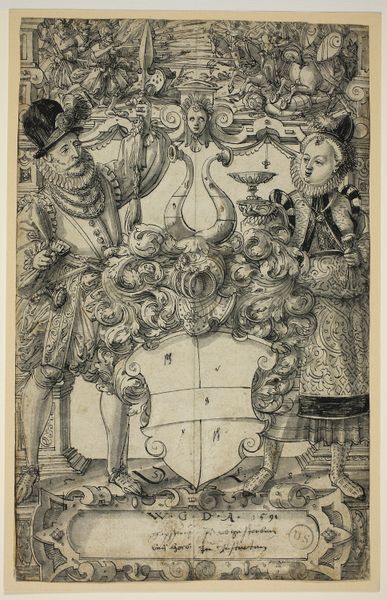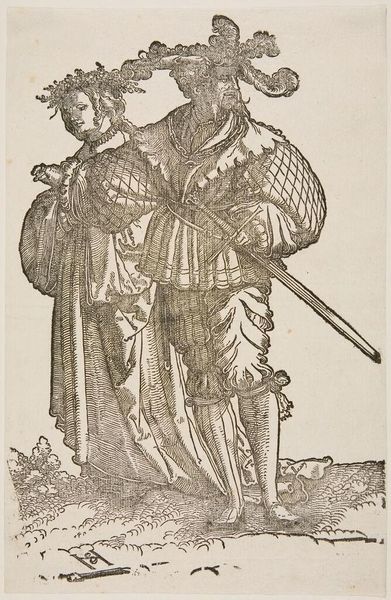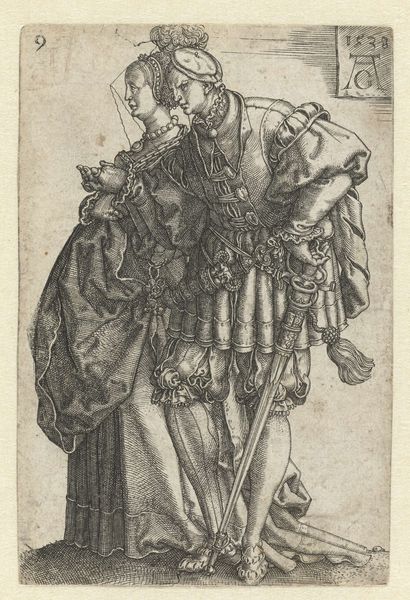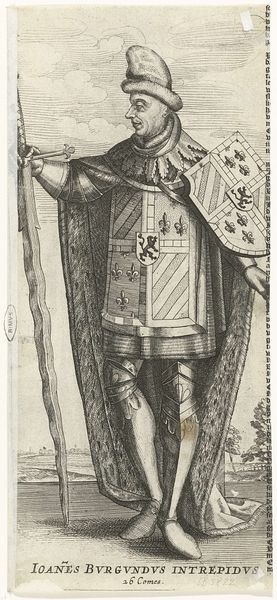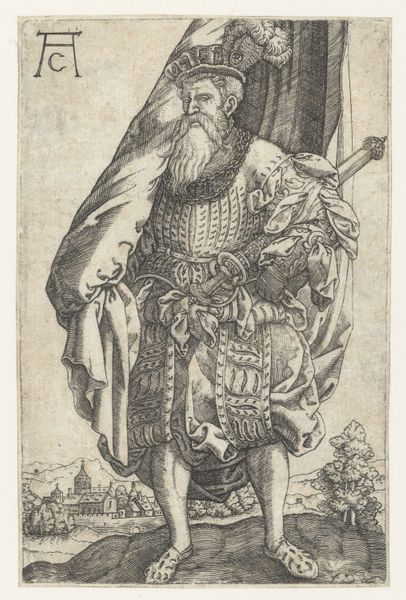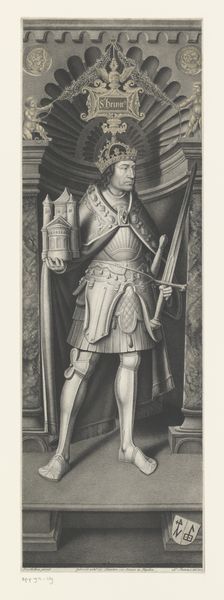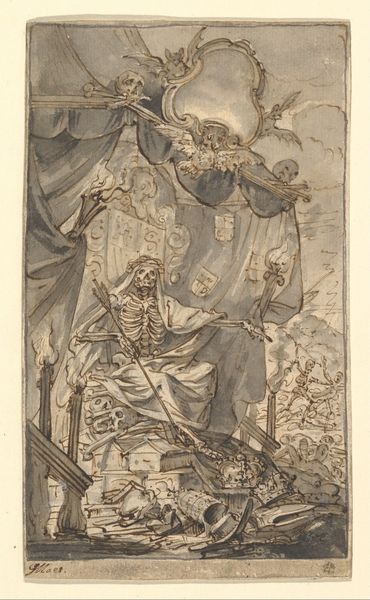
textile
#
unusual home photography
#
egg art
#
textile
#
text
#
handmade artwork painting
#
oil painting
#
coffee painting
#
framed image
#
christianity
#
earthenware
#
watercolour illustration
#
surrealist
#
watercolor
#
christ
Copyright: Public domain
Curator: This striking panel is Carlo Crivelli's "Saint George," dating from 1472, now residing at The Metropolitan Museum of Art. Editor: What I immediately notice is the rather ornate, almost overwhelming amount of detail, but it definitely holds your gaze. And that vertically striped spear—is it supposed to look like a candy cane? Curator: It is eye-catching, isn't it? As an object, a panel painting like this involved specific techniques –likely tempera on wood–and skilled craftsmanship. Crivelli would have painstakingly applied thin layers to achieve that gilded effect. Editor: The abundance of gold is intentional; gold symbolizes divinity, emphasizing Saint George’s holiness. It speaks volumes about the power of the Church and the cultural values that esteemed such precious materials. But let’s talk about Saint George himself. What do his emblems mean? Curator: The symbols of military virtue like the armor are readily apparent, and would have required particular manufacturing processes. Beyond just protection, such details are carefully and laboriously made, indicating wealth and status, both in the depicted subject, and for whoever commissioned such work. Editor: I see that! And it appears like a dragon at Saint George’s feet, signifying his triumph over evil. Remember, Saint George is not just a historical figure here; his image resonated deeply with notions of chivalry and spiritual fortitude. It is no surprise this was displayed for devotional reasons, a source of moral guidance for viewers in that time. Curator: Precisely. And understanding that material reality—how such works were produced and circulated, and how that determined their availability—helps us appreciate their multifaceted roles within that historical milieu. Editor: True, we've decoded visual markers that deepen our understanding of the work! Recognizing the symbolic language unlocks further possibilities regarding the artwork's significance. Curator: Right. Materiality, meaning, memory... fascinating points that highlight Saint George as a product and transmitter of a world so very different from our own. Editor: I concur! It seems there are both functional, material purposes for art, as well as spiritual ones. A complex balance.
Comments
No comments
Be the first to comment and join the conversation on the ultimate creative platform.

